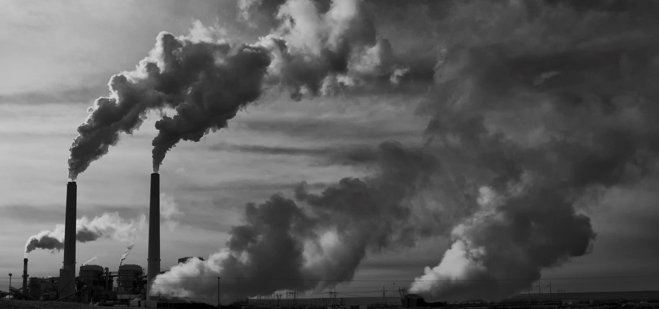Can a “Brown” Consolidator Lead the “Green” Revolution? — David Crane and NRG Energy

Under David Crane, NRG Energy became the U.S.'s largest Independent Power Producer and a Fortune 200 company. It also became one of the largest renewable power generators in the country. But why haven't any of us heard about NRG? What can leaders – investors, operators, and regulators – learn from their story?
When I met David Crane, I wanted to talk about solar energy. He wanted to talk about storing energy. No one in the room wanted to talk about NRG Energy.
NRG: An IPP with a Clouded Past
An “independent power producer” (IPP) generates power and sells it to utilities or other users – but it isn’t a public utility. As a trade group puts it, “unlike the regulated, vertically integrated utility paradigm, competition provides price signals to promote an efficient level of investment in appropriate locations.” [1] In theory, competition from IPPs could make power generation more efficient.
At the turn of the century, NRG Energy was one such IPP; it actively acquired, developed, and operated domestic fossil fuel power plants (“brown” energy). In time, the Company’s strategy proved too aggressive and in 2003, following an energy downturn, it filed for bankruptcy.
Enter David Crane.
Mandate to Change: From Ashes to … More Ashes?
After Crane took the helm, NRG’s power plant portfolio had over 17 gigawatts (GW) of generating capacity. Plants were “fired” by a mix of coal (~30%), natural gas (~50%), and oil derivatives. [2]
Investors were looking for Management (that’s David Crane) to grow earnings through a mix of (1) operational cost reductions, (2) reinvesting in high return-on-equity coal and natural gas expansions, and (3) spearheading consolidation of the independent power producer industry. [3] They wanted NRG to buy even more fossil fuel plants.
Management executed.
Led by acquisitions of Texas Genco ($5.8B), GenOn ($4.0B), and Edison Mission ($3.1B), NRG became the largest IPP in the U.S. with ~45 GW from coal, natural gas, and oil power plants. [4] Forbes put it bluntly, “NRG Energy is one of the nation’s biggest operators of carbon-belching power plants.” [5]
Crane saw NRG’s climate impact as an imperative for change. Across two days in November 2009, Management presented a strategy to transform “to a post-hydrocarbon purveyor of sustainable energy solutions.” [6] They needed to respond to climate change.
Moreover, they wanted to capitalize on that response – to be a first-mover in next generation solar and nuclear. After all, wasn’t this the point of IPPs? Shouldn’t they be the most efficient owner-operators?
Renewables: A Short-Term Until Short-Termism Caught Up
The renewables strategy had a profit motive, too.
The Company knew that its fossil fuel plants would have increasing environmental liabilities under various regulatory scenarios (they expected to invest nearly $1B in pollution control). [7]
NRG also recognized consumers had a desire for cleaner power. Climate change was shifting behavior. This underlying desire for cleaner power resulted in new (solar) installations and more supply on the grid. With total power supply outpacing demand growth, NRG’s fossil fuel business would become less attractive (in California, net demand from gas-fired plants decreases significantly from 9AM to 6PM when the sun is visible!). [8]
NRG invested heavily in both renewables acquisitions (e.g., a large portfolio of wind assets outside Los Angeles) and organic initiatives (e.g., a new electric vehicle charging business).
What happened? Why haven’t we all heard of NRG?
David Crane was fired as CEO in December 2015.
Following his dismissal, the new CEO (Crane’s former COO) ‘reassured’ investors that the Company’s “core business would remain its coal- and natural-gas-fired power plants.” [9]
Lessons Learned: Transformation Is More Than One Person
No. The “brown” consolidator couldn’t lead the “green” revolution.
NRG’s mix of investments made it a “hard” company to invest in. In Crane’s words, “many times, institutional investors would complain to me about the complexity and challenge of what we were trying to do. They would point out to me that if they wanted exposure to ‘brown’ (a.k.a. fossil fuels), they could buy Dynegy (DYN). If they similarly wanted ‘green’ (renewables) they could buy Solar City (SCTY), and the portfolio of SCTY and DYN was easier for them to carry than NRG.” [10]
Moreover, culture shock was significant. What happens to someone working at a natural gas power plant when their parent company says renewables are the future? Good question.
Between investments in renewables (which had different cash flow profiles than the “brown” businesses) and underperformance in the Texas coal-fired business, NRG’s stock tumbled.
Put together, the story of NRG and David Crane is a stark reminder that it’s not enough for one business leader to decide that responding to climate change is important. Transformation requires ecosystems of leaders – investors, operators, and regulators – to understand one another. Having a CEO in the power generation industry recognize the need to respond to climate change was a start. But it wasn’t enough.
Crane wrote to his former employees:
That the clean energy future is going to happen is, at this point, inevitable, but as we have seen with my own personal experience, timing is everything and the earth, as we know it, is running out of time. We need to act now. [11]
All the same impetuses to invest in renewables in 2009 continue to exist for NRG today. The Company remains one of the largest renewable generators in the country with ~5 GW of wind and solar generation. Its legacy – Crane’s legacy – can still change. When is the right time? I’d say now is a good time to start. But maybe there’s something to that energy storage thing Crane wanted to talk about.
What do you think?
[1] Gavin Donohue, President and CEO, Independent Power Producers Of New York, Inc., remarks made at New York State Assembly Standing Committee on Energy, March 5, 2009. From transcript provided by Independent Power Producers Of New York, Inc., http://www.ippny.org/uploads/PDF/1300988457_UCP_Testimony09.pdf, accessed November 2016.
[2] Brian Chin and Greg Gordon, “NRG: Initiating Coverage With A 1H Rating and $45 Target Price.” Citigroup Global Markets Inc., December 20, 2004, via Thomson Reuters/Thomson ONE, accessed November 2016.
[3] John Kiani, Dan Eggers, and Laura Blanco, “NRG Energy: The Devil Is in the Details.” Credit Suisse First Boston, April 18, 2005, via Thomson Reuters/Thomson ONE, accessed November 2016.
[4] NRG Energy, Inc., June 2015 Investor Presentation, p. 6, http://phx.corporate-ir.net/External.File?t=1&item=VHlwZT0yfFBhcmVudElEPTUxOTYwMTJ8Q2hpbGRJRD01ODQxNzg=, accessed November 2016.
[5] Christopher Helman, “David Crane’s Green Vision For Carbon-Belching NRG Energy,” Forbes, July 2, 2014, http://www.forbes.com/sites/christopherhelman/2014/07/02/david-cranes-green-vision-for-carbon-belching-nrg-energy/#4f132e237d57, accessed November 2016.
[6] NRG Energy, Inc., NRG 2009 Investor Conference: Day 1 Presentation, p. 9, http://phx.corporate-ir.net/External.File?t=1&item=VHlwZT0yfFBhcmVudElEPTI1NjAyMjV8Q2hpbGRJRD0zNjAwNzY=, accessed November 2016.
[7] Jonathan Cohen and Greg Gordon, “NRG Energy, Inc.: Modestly Overvalued to Forward Curve, but Levered to LT Natural Gas Price.” Morgan Stanley & Co. Incorporated, October 6, 2010, via Thomson Reuters/Thomson ONE, accessed November 2016.
[8] Jonathan Arnold, “Back with a Spark – Independent Power Industry Handbook.” Deutsche Bank Securities Inc., September 23, 2014, via Thomson Reuters/Thomson ONE, accessed November 2016.
[9] David Ferris, Edward Klump, and Debra Kahn, “Why NRG’s Green Crusade Faltered,” EnergyWire (blog), E&E Publishing, LLC, March 7, 2016, http://www.eenews.net/stories/1060033507/, accessed November 2016.
[10] David Crane, “If I was right, why was I fired?,” PowerPlayer (blog), GreenBiz, January 12, 2016, https://www.greenbiz.com/article/if-i-was-right-why-was-i-fired, accessed November 2016.
[11] David Crane, “David Crane’s farewell letter to NRG employees,” PowerPlayer (blog), GreenBiz, January 5, 2016, https://www.greenbiz.com/article/david-cranes-farewell-letter-nrg-employees, accessed November 2016.
(789 words)







This is a very interesting post on an interesting company. I believe that one of the reasons that NRG has been struggling over the last several years is because to their investors they appear to be a big company with an even bigger identity crisis. Is NRG a renewable energy company? A conventional energy Company? What are their values, and what do they stand for? It does not appear that NRG was presenting a clear message to investors, and therefore NRG lost its trust, credibility, and money. I agree with Crane’s message to employees “that the clean energy future is going to happen is, at this point, inevitable.” It will be interesting to see if it is possible for an energy company to successfully create a diverse portfolio of renewable energy and conventional energy assets and maintain investor support. This question will be put to the test with oil companies, which will inevitably need to transition towards cleaner energy sources over the next several decades to not become irrelevant.
Very interesting post! At the end of the day, investors are investors: they only care about returns. I believe there’s a real investment thesis around green energy, but convincing investors is tricky.
One point that caught my attention: you mentioned “next generation nuclear energy”. But the US barely has “current generation” nuclear energy today. Why do you think this is? Nuclear is one of the cleanest, most profitable and sustainable source of energy. Yet US companies and government won’t look at it. What a waste!
This post is very, very interesting. It reminded me that once the “brown” IPP players start to involve financial investors as shareholders, such players face the shareholders’ expectation of the company to be a “brown” player, thus not to transform itself to a “green” player. From investors’ perspective, this argument is logical since diversification could be done not in a company level but investors’ portfolio level. This reality keeps me wondering how a “brown” player which wants to gradually shift to a “green” player could do so in a harmonious manner with shareholders. Totally separating business entities and having different shareholder bases could be an option. Operationally, a newly started “green” company would be benefited if it could enjoy business know-how accumulated in the “brown” company (although business risk/return etc will be different between brown and green, I believe there are elements in common too such as how to negotiate Power-Purchase-Agreement, related project contracts, etc.). Possibly, cost-center entity could be setup to work for indirect function of these two companies (brown and green co). HR strategy could also be considered on cross-companies basis. These measures could make it possible to create the structure where shareholder bases are sufficiently separated, but two companies are more or less integrated in terms of business operational aspects. This topic is worth further exploring. Thanks again for this invaluable post!!